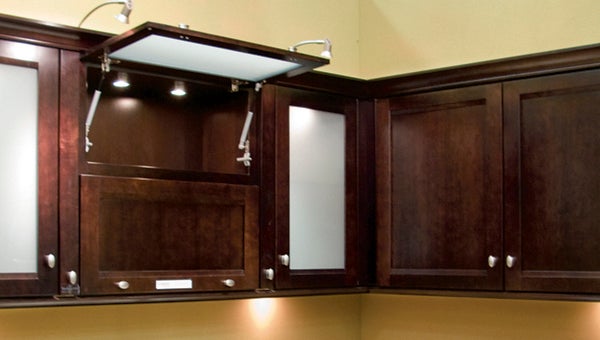Organization makes kitchens efficient
Published 8:20 pm Wednesday, September 14, 2011

Larger cabinets and containers can help relieve kitchen cabinets of overwhelming conditions, Home and garden writers suggest using a Lazy Susan to save space in the pantry. -- Special photo
Maybe you’re looking through the pantry for a can of spaghetti sauce for tonight’s dinner or trying to retrieve that jar of Jiff peanut butter hidden in the back of the cabinet that you’d thought expired. If you don’t know what’s in your kitchen cabinets it may be time to organize.
A kitchen pantry can get overwhelmed with jars, boxes of food, and cans, sometimes causing one to buy duplicate products and making it impossible to know what one really has. Home and Garden experts say having an organized pantry makes it easier to prepare meals and saves you money by not purchasing duplicates and buying in bulk instead.
Ideal Home and Garden writer Michelle Tako said when it comes to pantry organization, it’s “out with the old.”
“To start your organizing spree, take everything out of the pantry,” Tako said. “Set out every box, jar and can on the counter, and go through them one by one. Throw away anything past it’s expiration date, spices that are more than a year old and has no odor, open bags or boxes that have gone stale and donate any items that are still good, but unlikely to be eaten by family members.”
Tako also said it’s simpler to put products of similar nature together.
“Some common groupings include packaged mixes, cooking basics, such as flour, baking soda and sugar, cooking oils, vinegar and marinades, grains such as rice, lentils and beans, canned goods, bags of snacks, bread and unopened staples such as ketchup, mayonnaise and salad dressing.”
Clever storage and shelf-organizing accessories will greatly improve your pantry’s usability.
“For big quantity stuff I would recommend canisters, clear containers, for flour, grits, sugar, spaghetti, macaroni — things you use all the time,” said Dollar General store manager Belinda Roper. “Some people label and some people don’t. Most cabinets are 36 inches deep, you can use Lazy Susans which are round, or the pull-out kind, which are rectangular … baskets and things of that nature are good too for snacks.”
Roper also said for bigger cabinets that are 2-and-1/2 feet wide, using a plastic list the length of a cabinet to be placed in the back of the cabinet to organize items, is also ideal.
“It’s like a miniature step with three levels … (it’s) shaped like a ‘u’,” Roper said. “It lifts spices at different levels so you can see spices easily.”
Roper said there are many organizational things on the market and prices of items vary — costing from $2 to $20.
Tako also recommends placing items on stacking shelves, under shelf baskets, spice/tiered racks, rollout storage bins, stacking bins or corner shelves for easy food rotation.
“Keep a master list of your kitchen staples, spices and items you use infrequently taped to the inside of your pantry cabinet,” Tako said. “Write it on a dry-erase board so you can update it easily. Once a month go through your pantry and dispose of any expired items and foods that have been sitting open.”





